Day 5 (October 4)
We drove back the next day, arriving in
Ulaanbaatar for lunch at a local restaurant. After lunch, we went
to the National Museum, where one of the curators gave us a tour.
The bottom floor contained artifacts from and exhibits about early
steppe history up to around 1100 AD, including replicas of Mongolian
“deer stones.” Deer stones are ancient megaliths that were erected
during the Bronze Age (about 2000 BC) to the Iron Age. There is no
definitive answer about why they were used; different theories run from
territorial markers to commemorative plaques.
The second floor contained exhibits of traditional Mongolian outfits
from the twenty-one different regions that make up the country, and
other background material (musical instruments, snuff bottles, etc.)
leading up to (surprise, surprise) the next floor which started with
exhibits about Chinggis Khaan and the Mongol empire.
That morphed into a small section covering the years from the end of the
Mongol empire to the formation of the Mongol People’s Republic in the
early 20th century, when Mongolia came under Russian rule, and from
there to post-1990 Mongolia, the current democratic country it is today
(entertaining because when you reached that final section, suddenly
there was rousing music and all the walls were bright and cheery).
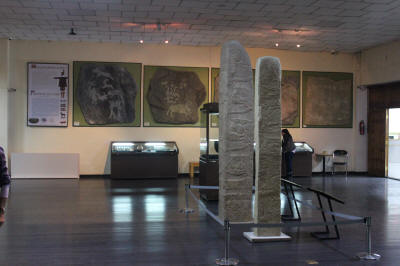 Deer Stones |
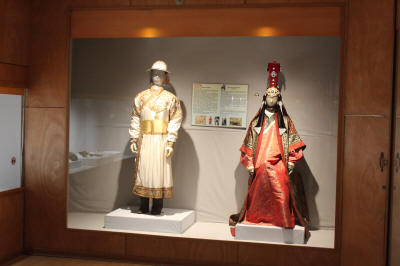 Tradition Mongolian clothing from one of the twenty different ethnic groups in the country |
 And more clothes from many ethnic groups |
 The war banner of Lord Chinqnunjav who lead an armed uprising against the Manchu occupation, 1758 |
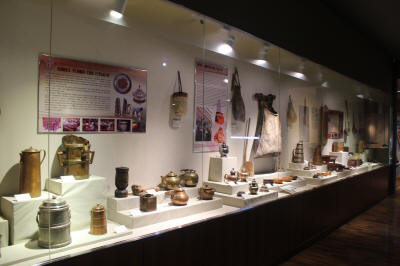 Artifacts from early 1900s |
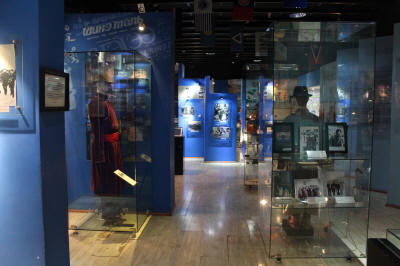 Democratic Mongolia in happy shades of blue |
After the museum visit, we checked back into the Shangrai-La and enjoyed the comforts of western-style toilets and on-demand hot showers.
Day 6 and 7 (October 5 and 6th)
We were up in time to leave the hotel at 4:00
am the next morning, making it to the airport to catch the chartered
5:50 am flight to Ölgii, the capital of Mongolia’s westernmost province
of Bayan-Ölgii. Olgii is the town that hosts the Golden Eagle
Festival. Nestled against the Altai Mountains, the region is 90%
ethnically Kazakh and primarily Muslim (the only Muslim province in
Mongolia).
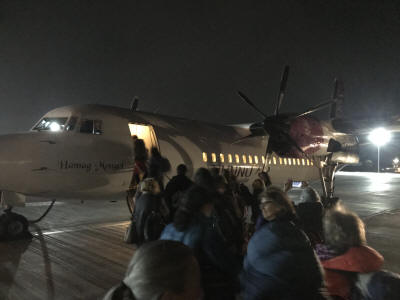 O-dark-30 flight to Ölgii |
 View during the flight |
Where Ulaanbaatar seemed like a mining town, Ölgii felt like a frontier town. Dirt roads between buildings were as common as asphalt, there were no sidewalks, and there was a giant sprawling outdoor market that sold everything from fruit to dish detergent.

Ölgii town square
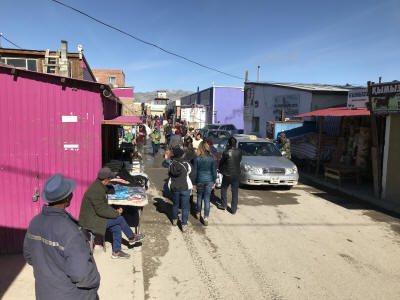 The outdoor market |
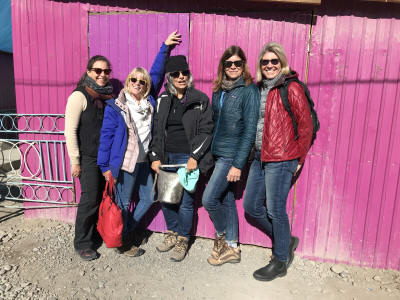 Fashion shot with the women |
We had a short stop at a museum that focused on Olgii history, and next visited local mosque. We then headed for ger campsite number two, which was about ten miles out of town next to a river on an ancient flood plain, looking out at the surrounding mountains. It was a supremely beautiful spot.

Approaching the camp site
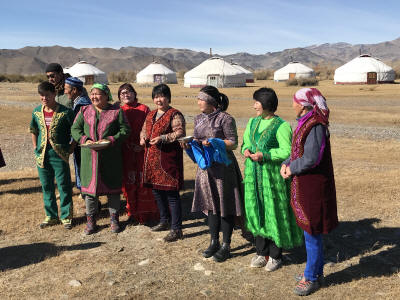 Welcome by the staff in traditional clothing |
 Our Ger |
 Snow capped mountains in the distance |
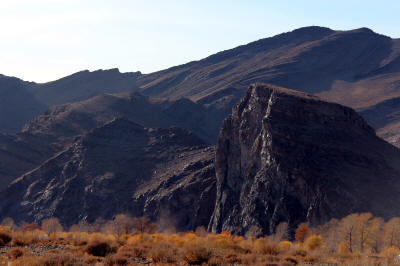 And closer mountains that just looked cool |
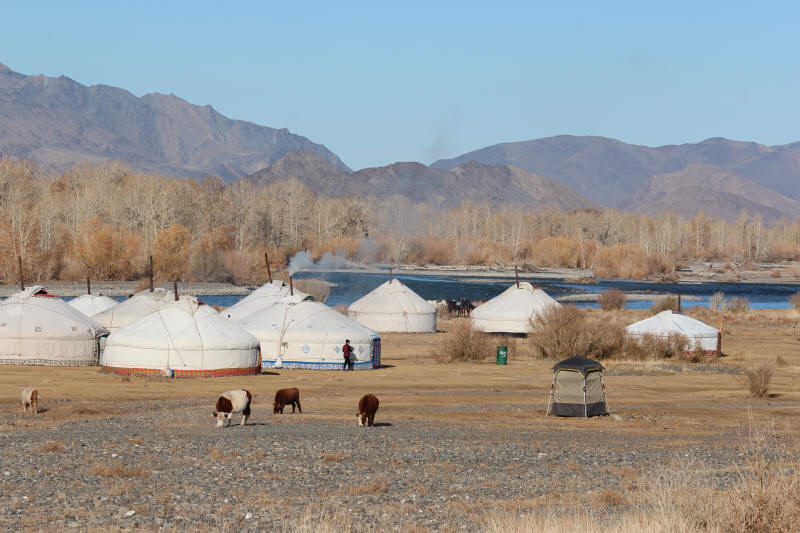
The camp site. While we were in the restaurant ger, these cattle would stick their heads in the door to see who was inside

The river that flowed by the campsite

Sleeping Ger

Party Ger
The Golden Eagle Festival was, in a word,
fantastic. It wasn’t just that the eagles themselves were wildly
beautiful birds, large and fierce predators with piercing eyes and
wickedly sharp talons. It wasn’t the skill of the riders, whether
handling the birds or demonstrating their prowess on horseback. It
wasn’t the pop-up market, where nomadic families had their handcrafted
wares (be they barbequed skewered meat, cashmere, or wall hangings) out
for display and sale.
It was the authenticity of the event.
There were 120 competitors, and somewhere near 1,000 or more spectators,
but there was nothing separating the two other than a simple rope to
indicate the playing field. Many of the spectators were locals,
and the rest were mostly older Caucasians like us. That seemed
odd, as China has a burgeoning tourist population that is swamping
European cities, and China is a neighboring country. Ganzo
explained that there is a general mistrust of Mongolians by the Chinese
population; while the governments are cordial, four thousand years of
invasions of China by the inhabitants of the steppes has left its
mark.
But we were all there, rubbing elbows, the eagle hunters in their fine
fox-fur coats and hats, camel riders decked out Kazakh style, families
in blue jeans selling local crafts, tourists in whatever they were
comfortable in. There were some individuals that were dressed in
ceremonial Kazakh garb for portions of the event, but even that had the
feeling of people putting on their Sunday best for church rather than
someone doing cosplay, or dressing in homespun to show what people who
arrived on the Mayflower lived. It didn’t seem like a show, it
seemed like a celebration.
Which is pretty funny, because the Golden Eagle Festival is completely
made up.
 The eagle hunters sharing our campsite |
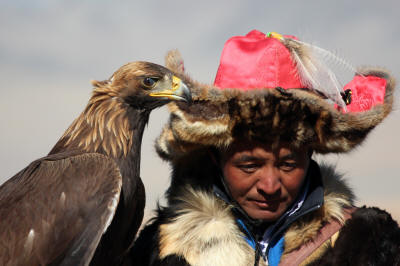 Closeup of one of the hunters |
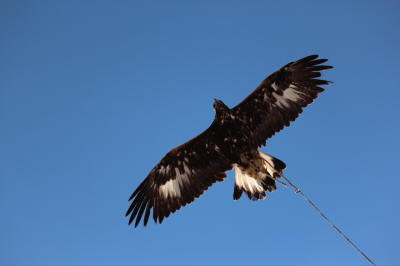 Golden eagle in flight |
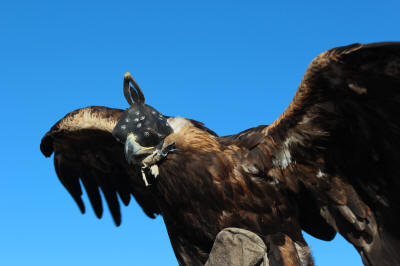 They usually had blinders on to keep them calm |

Mr. Badass
Let’s more formally introduce Jalsa Urubshurow,
the charismatic CEO and owner of our tour company Nomadic Expeditions,
into our little narrative. Jalsa is the kind of guy whose
personality fills any room he happens to occupy. If you’re into
anime, he’s Iroh, the brother of the fire nation emperor, enjoying life
with gusto, taking nothing too seriously, relaxed in any environment,
and yet giving wise counsel to his nephew. But there’s that sense
that beneath that jolly exterior, always with a story to tell or a wry
observation to make, lies a markedly capable and strong-willed
individual.
Jalsa was in one of two groups of Mongolian refugees that came to the
U.S. when he was a child. He and his family settled in New Jersey.
He told us stories about his father, who lacked any kind of formal
education, but who instilled a deep-rooted reverence for Jalsa’s
Mongolian heritage. Jalsa went on to become the owner of a
successful timber business, successful enough that he could afford to
invest in a travel agency that specialized in custom journeys to
Mongolia and other Asian destination. Thus, Nomadic Expeditions
was born.
Which brings us back to the Golden Eagle Festival, which was started in
2000 by Jalsa and a few Kazakh partners. Having said that, it was
more taking an existing but very informal competition and making into
something large enough and organized enough to become the spectacle it
is today. It was a way to promote Mongolia and culture, though not
done for financial gain; Jalsa pours most of the money from Nomadic
Expeditions back into the community. Jalsa simply loves Mongolia;
he told us one story about a serious drought year where the cattle were
dying of starvation, and how he financed forty thousand pounds of hay
and high protein food pellets for the local herders.
But back to the festival. We were lucky enough to have a group of
eagle hunters staying at our ger camp. As it turns out, Zsolt, our
group’s resident Hungarian and Native American flute player, is also
quite a horseman. He is a very warm and gregarious individual who
bonded with everyone. Multiple times he stayed up until the very
wee hours of morning drinking and talking with people… and the morning
of the competition rode off with the eagle hunters for the eight-mile
horseback ride to the Festival.

Sunrise over the camp (with the moon hovering overhead)

Zsolt and company heading for the Golden Eagle Festival
The Golden Eagle
Festival ran over two days and consisted of five main activities. The
first was to get your eagle, launched off the top of a mountain, to come
land on your wrist. The farther from the mountain you were, the more
points you were awarded. The second was grabbing small bags off the
ground while galloping by on horseback, which requires the rider to ride
hanging sideways, sometimes almost upside down on the horse, holding on
with nothing but their legs and pure determination. The third
competition was similar to the first, but instead of landing on your
wrist, the eagle had to snare a lure dragged behind the horse. The
forth was ritualized courtship game where a woman and a man in
ceremonial wedding clothes on horseback rode around while the man tried
to steal a kiss and the woman tries to beat him off with a riding crop.
They had several pairs of riders of different ages perform this somewhat
baffling maneuver though the women seemed invariably to win. The final
competition was a tug of war on horseback using a fifty pound goat
instead of a rope. In case you’re worried about the goat, don’t be; it
is dead, it’s head and bones have been removed (don’t ask us how you
remove the bones without cutting up the goat, it’s a Mongolian mystery
that is better left unsolved), the blood drained and the skin sewn back
up. The winner gets to keep the goat carcass, whose meat has been
violently but completely tenderized by the end. It falls in the
gruesome but fascinating end of the entertainment spectrum.
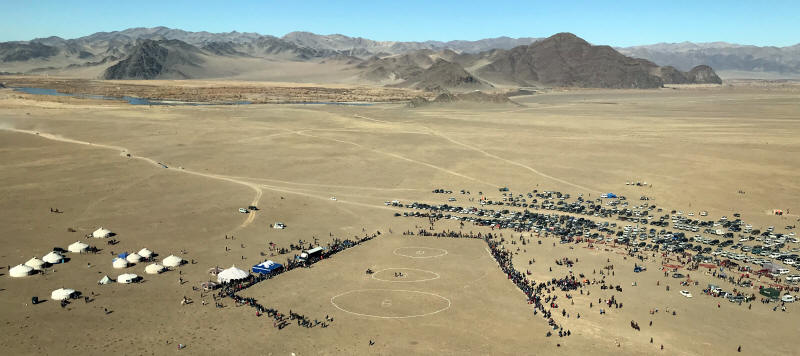
View of the Eagle Festival grounds from the top of the mountain where they were released
 Camel were common |
 The star of the Eagle Huntress movie |
 Coming in low |
 Ready to kill |
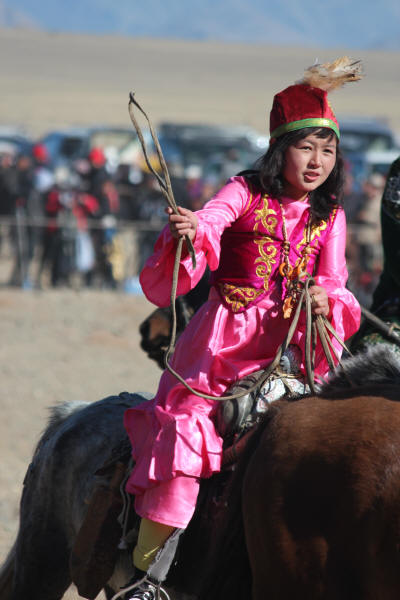 One of the "beat him off with a crop" riders |
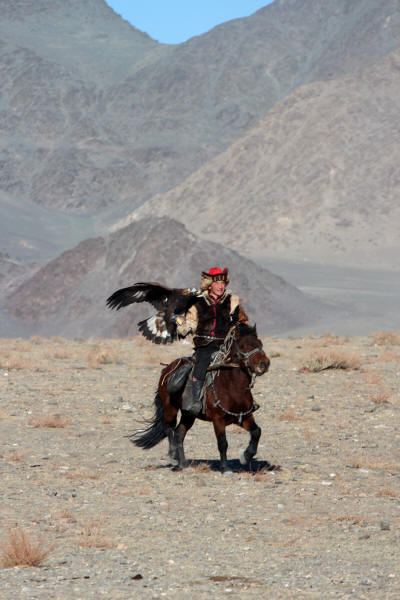 And Eagle Hunter arriving from a distance ger |
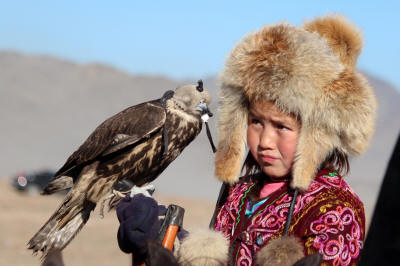 Starting young |
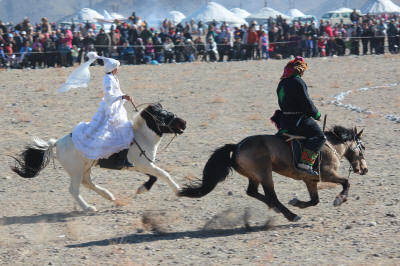 The kiss her, smack him game |
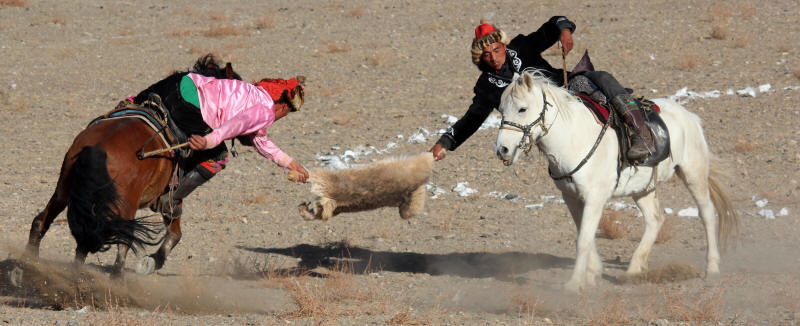
Yes, that is a beheaded boneless goat
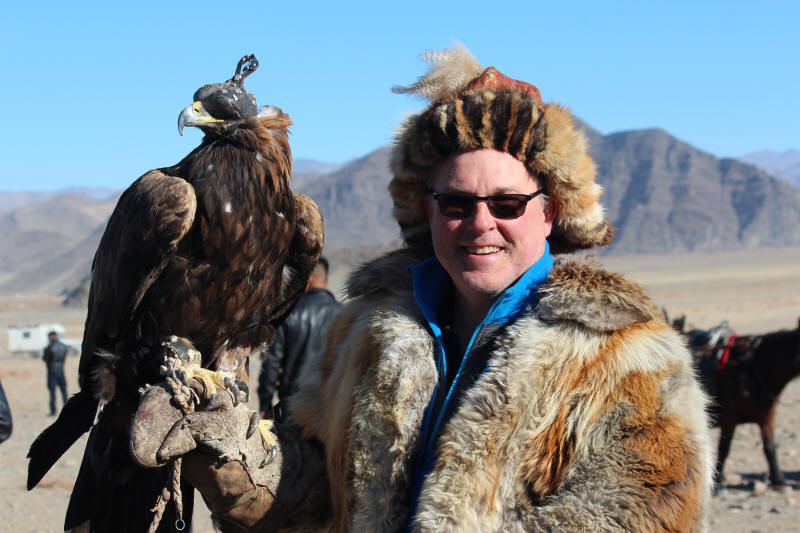
New look for Dave
After the Festival’s first day, we had a
chance at camp to wander around the flood plain. It offered up a
fascinating variety of water-worn rocks and open vistas, along with
dozens of multiple-thousand-year old burial sites called khirigsuur.
There were a few different varieties; simple heaps of stone, stone
circles, and stone squares (and maybe others we didn’t see). Then we
came across a current cemetery that used the same general technique but
had grave markers.
 The flood plain |
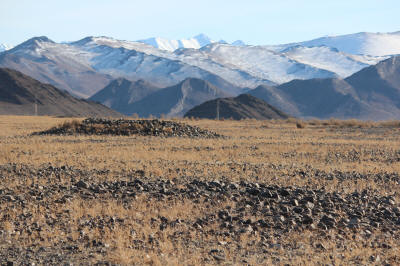 Grave markers (the pile of rocks) |
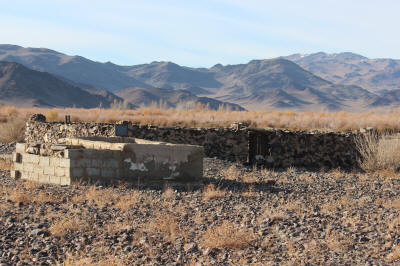 Looked like a foundation |
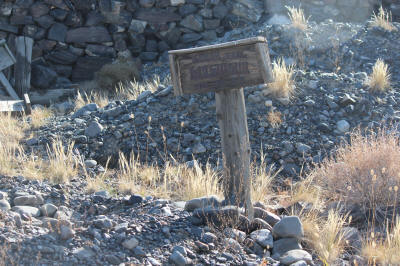 But it was a graveyard |
To celebrate the end of a terrific festival, during our final evening at the ger camp there were local musicians, a bonfire, and cocktails (cosmopolitans and “monhattens” were the favorite drinks) by the river. That eventually gave way to a dance party, which might have fallen a bit short of being called a rave but wasn’t far off. Zsolt ended up playing the flute by the bonfire and everyone slept well that night (other than Zsolt, who impressively stayed up talking with other night owl denizens until the sun rose).
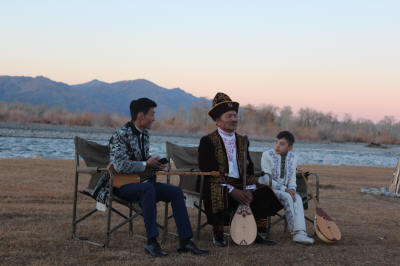 |
 |
 |
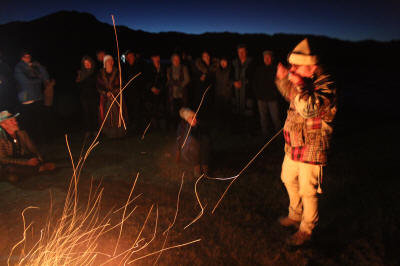 |